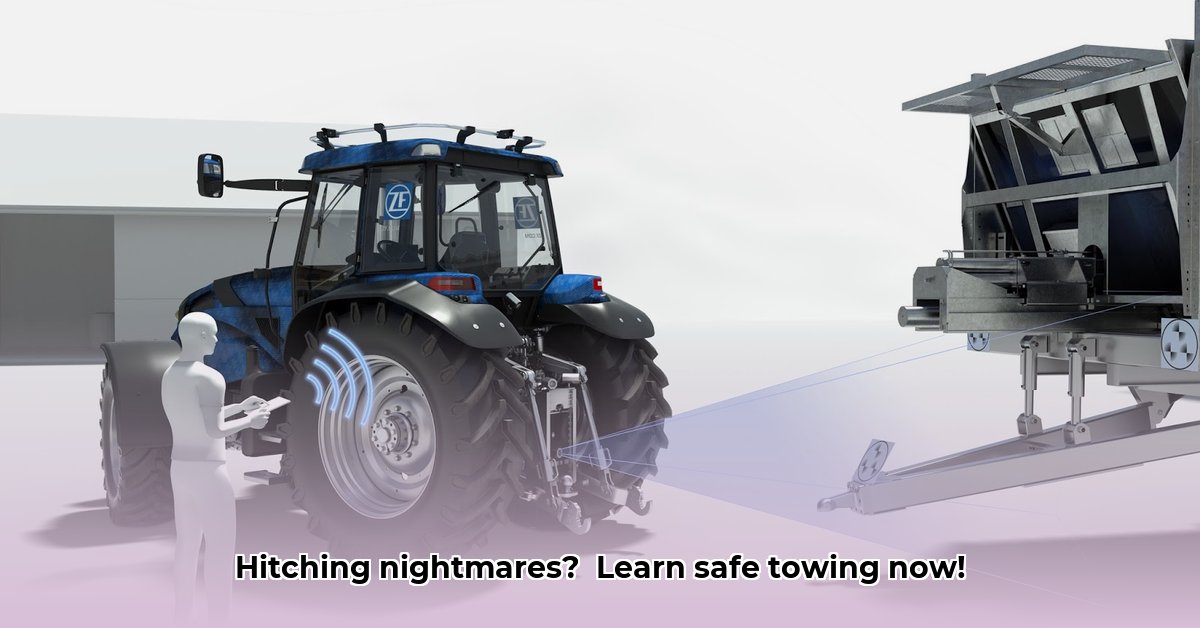
Hitching a trailer to a tractor seems simple, but improper coupling leads to accidents, injuries, and legal repercussions. This comprehensive guide ensures safe and legal hitching practices for various trailer types. We’ll cover pre-hitching checks, step-by-step instructions, legal compliance, and troubleshooting common issues. For more detailed information, see our Hitching Guide.
Legal and Regulatory Compliance: Understanding the Rules
Before hitching, understand local and state regulations. Laws vary significantly regarding permissible trailer types, weight limits, driver licenses, lighting, and braking systems. Penalties for non-compliance range from fines to legal action. The Federal Motor Carrier Safety Administration (FMCSA) sets federal standards, but individual states may have stricter requirements. Check your local regulations before connecting a trailer. This is non-negotiable for safe and legal operation.
Pre-Hitching Checklist: Mitigating Risk
This checklist is crucial for preventing problems. Before connecting anything, inspect:
- Tractor: Check engine oil, hydraulic fluid, tire pressure, hitch mechanism condition, and PTO (power take-off) functionality.
- Trailer: Inspect tires, lights (running and brake), brakes (if applicable), coupling mechanism, landing gear, and secure cargo fastening. Ensure the Gross Vehicle Weight Rating (GVWR) isn't exceeded.
- Weight Verification: Accurately weigh your load to stay within your tractor's weight capacity and legal limits. Overloading is unsafe and illegal.
Step-by-Step Hitching Instructions: A Safe Coupling Process
Follow these steps meticulously. Take your time; rushing increases the risk of errors.
- Tractor Preparation: Lower the hitch to the correct height, aligning it with the trailer's coupling. Engage the PTO if needed, following your tractor's manual.
- Trailer Positioning: Maneuver the tractor close to the trailer, aligning the hitch with the coupler. Lower the landing gear to support the trailer.
- Hitch Connection: Carefully guide the hitch ball into the coupler. Ensure a secure and complete connection. Use the hitch pin and lock for secure engagement.
- Safety Chains: Connect safety chains in an "X" pattern, allowing some slack to prevent excessive tension. These are critical safety features.
- Lights and Brakes: Connect the trailer lights and brakes (if equipped). Test everything to ensure functionality. Incorrect wiring or brake failure is a significant safety hazard.
- Final Safety Check: Perform a thorough inspection. Re-check all connections, lights, brakes, and the overall stability of the trailer.
Different Trailer Types: Adapting to Specific Loads
Hitche procedures vary slightly depending on trailer type (car trailers, flatbeds, livestock trailers, etc.). Always consult your trailer's manual for specific instructions. Ensure you understand the unique hitching and securing requirements for your specific load. Incorrect securing methods can lead to catastrophic accidents.
Post-Hitching Inspection and Safety: A Final Check Before Departure
Before driving, conduct a final inspection. Recheck all connections, lights, brakes, and load security. This final check is crucial for maintaining safe operation. Don't skip this step. Is it worth risking an accident?
Troubleshooting Common Problems: Addressing Hitching Issues
- Hitch Misalignment: Reposition the tractor and trailer. Use a spotter for assistance if needed.
- Brake Problems: Do not move the equipment. Thoroughly diagnose and repair brake issues before operating the trailer.
- Safety Chain Issues: Reconnect chains, ensuring they're correctly crossed and securely fastened.
- Lighting Problems: Inspect bulbs and wiring. Replace any faulty components.
Conclusion: Responsible Tractor-Trailer Operation
Safe and legal tractor-trailer operation requires adhering to regulations and employing safe practices. Remember: thorough pre-hitching inspections, careful coupling, and a final safety check are crucial steps to prevent accidents and ensure legal compliance. Prioritize safety throughout the entire process.